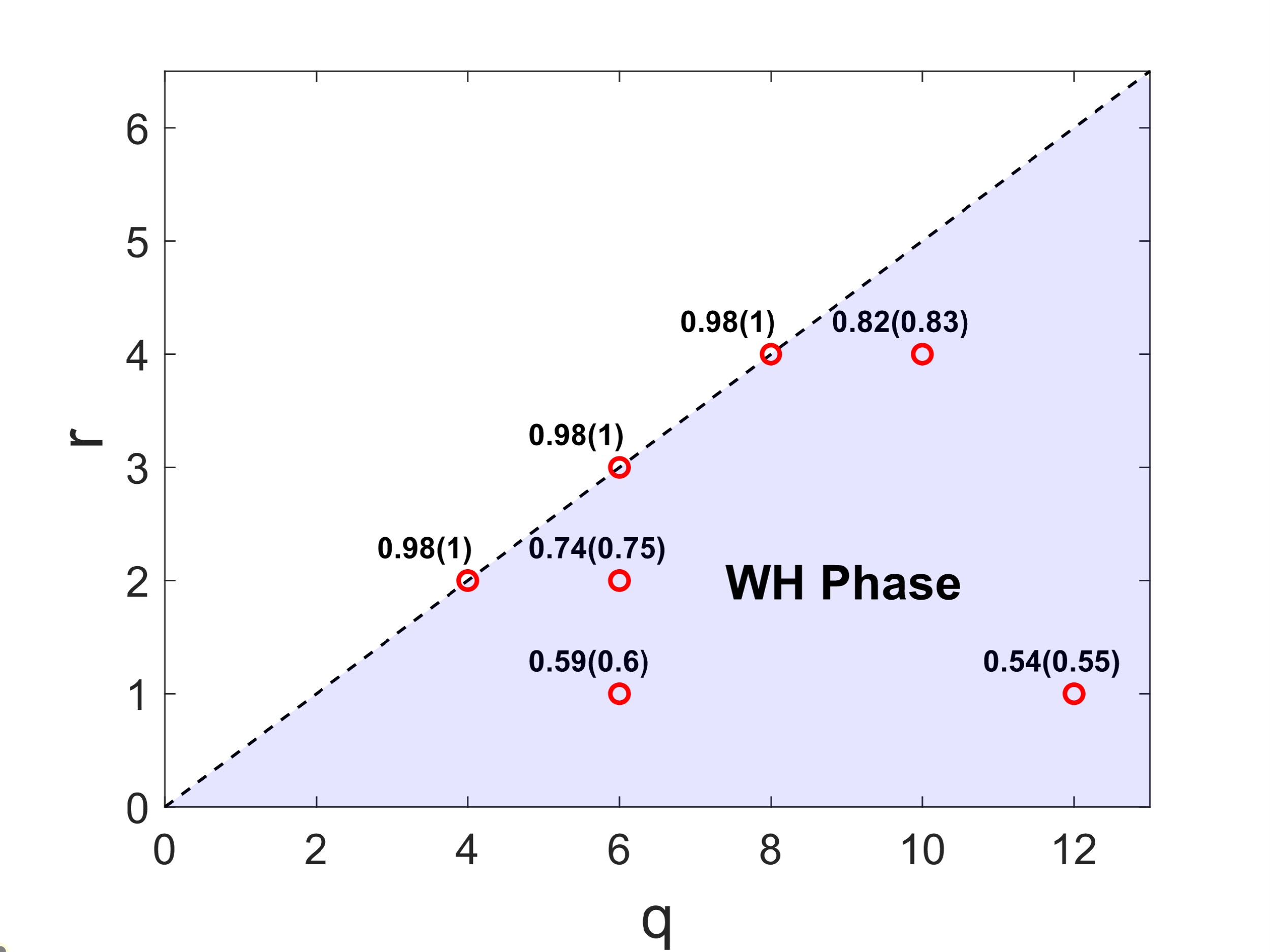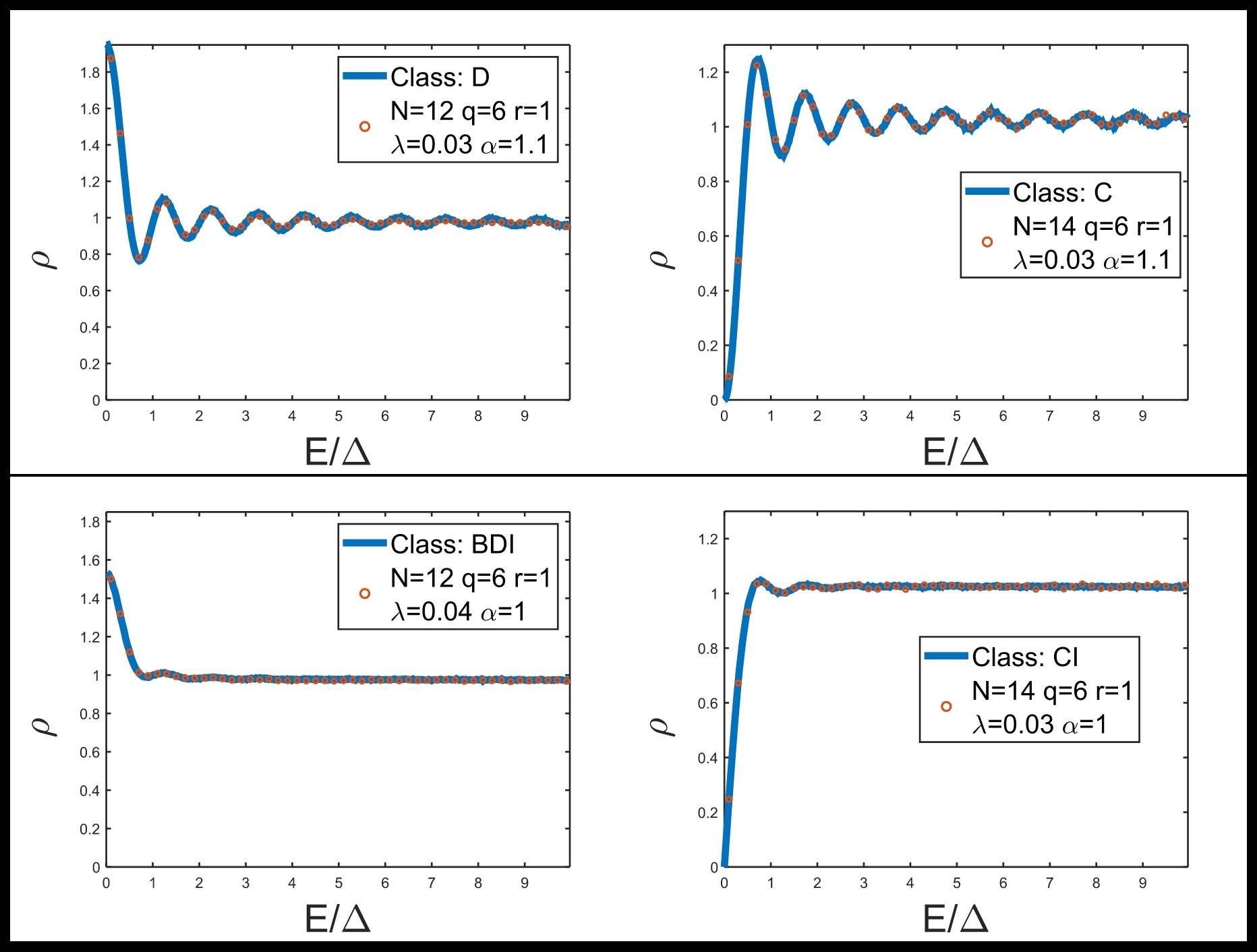
Introduction:
The wormhole is a shortcut between disconnected geometries. Embedded in three-dimensional spacetime, the 1+1 dimensional wormhole can be visualized as hyperbolic, corresponding to the two-dimensional Anti-de-Sitter (AdS2) metric. A wormhole is defined as “traversable” when information is allowed to propagate from both directions on both sides of the wormhole. However, making the wormhole traversable usually violates universal laws of nature such as the averaged null energy condition (ANEC).
Recent research has found that no violations occurs in traversable wormhole constructed in global AdS2 spacetime with a dilaton field provided that the two boundaries of this background are coupled by a weak double-trace deformation. In the low-energy limit, the effective action of the system turns out to be exactly the same as that of the two-site Sachdev-Ye-Kitaev (SYK) model with a weak inter-site coupling.
Based on this correspondence, Prof. Antonio M. Garcia-Garcia and his PhD student Can Yin (殷灿) at Shanghai Jiao Tong University (SJTU) have recently identified the conditions for the existence of traversable wormhole solutions in this two-site SYK model and proposed a systematic wormhole symmetry classification from the statistical analysis of the spectrum. Intriguingly, they found that traversable wormhole always lacks time-reversal symmetry.
Main text:
The study is focused on a general two q-body SYK systems of N Majorana fermions with weak inter-site interaction parameterized by strength ![]() and correlation r . In the large N limit, and for different choices of q and r, the work first adopted the path-integral formalism of imaginary time to derive the Schwinger-Dyson equations for correlation functions, then solved the equations explicitly using numerical iteration methods. Consistent with theoretical predictions, for q<2r, there always exist two kinds of solutions: the first has an energy gap linear with interaction strength
and correlation r . In the large N limit, and for different choices of q and r, the work first adopted the path-integral formalism of imaginary time to derive the Schwinger-Dyson equations for correlation functions, then solved the equations explicitly using numerical iteration methods. Consistent with theoretical predictions, for q<2r, there always exist two kinds of solutions: the first has an energy gap linear with interaction strength ![]() , fitting classical perturbation theory, dual to two wormholes, while the second shows a power-law relationship between the size of the energy gap and
, fitting classical perturbation theory, dual to two wormholes, while the second shows a power-law relationship between the size of the energy gap and ![]() . This anomaly can be interpreted as the enhancement by the tunneling effect from the wormhole. Thermodynamically, there exists a first-order phase transition between the high temperature black hole and the low temperature traversable wormhole phase.
. This anomaly can be interpreted as the enhancement by the tunneling effect from the wormhole. Thermodynamically, there exists a first-order phase transition between the high temperature black hole and the low temperature traversable wormhole phase.

Figure 1: The phase diagram for the two-site SYK model by q and r. The purple area denotes the region that allows traversable wormhole solutions. The red circles mark the cases where the paper explicitly found the wormhole solutions through numerical calculation. The tiny numbers above denote the power index for the power-law relationship between the energy gap and coupling strength ![]() , which can be compared with the theoretically predicted values in parentheses.
, which can be compared with the theoretically predicted values in parentheses.
A highlight of this research is a detailed wormhole classification as a function of r, N, q based on parity, time-reversal, and charge-conjugation symmetries This analytic symmetry classification is demonstrated numerically by employing spectral analysis and random matrix techniques. For all cases considered, the level statistics matched those of the random matrix theory (RMT) ensembles with the same symmetry, ensuring the system is quantum chaotic. In a quantum chaotic system, its dynamics after the Heisenberg time scale is determined by global symmetries, allowing the classification of the two-site SYK into six classes with the same dynamics, termed “universal classes,” marked as A, AI, C, CI, D, and BDI by Cardan group indexing. It turns out that all classes here lack time-reversal symmetry, reflecting that the corresponding gravity configuration should break time-reversal symmetry. An interesting future research project is to determine how to construct the corresponding gravity model for all symmetries considered and explore the physical meaning of lack of time reversal invariance in this context.

Figure 2: The spectral distribution for a small neighborhood of the zero-energy point, termed “microscopic density.” In the figure, the scatter plots represent the numerical results from the two-site SYK model, and the line plots represent the analytical distribution of RMT classes. The parameter ![]() denotes the average level spacing in the small neighborhood;
denotes the average level spacing in the small neighborhood; ![]() is an inhomogeneity factor, and when
is an inhomogeneity factor, and when ![]() , the two single SYK sites have different weights in the Hamiltonian. For different universal classes, the spectral distribution shows characteristic oscillations with details that exactly match the corresponding RMT class.
, the two single SYK sites have different weights in the Hamiltonian. For different universal classes, the spectral distribution shows characteristic oscillations with details that exactly match the corresponding RMT class.
Ending:
The results of this research have been published in Physical Review Letters with the title “Sixfold Way of Traversable Wormholes in the Sachdev-Ye-Kitaev Model” [1]. Additionally, the classification of the non-Hermitian generalization by the same authors has recently been published in Physical Review D with the title “Toward a Classification of PT-Symmetric Quantum Systems: From Dissipative Dynamics to Topology and Wormholes” [2].
The research was completed by Prof. Antonio M. Garcia-Garcia and his PhD student Can Yin (殷灿) (School of Physics and Astronomy, SJTU), Postdoc Lucas Sa (University of Cambridge), and Prof. Jacobus J. M. Verbaarschot (Stony Brook University), all corresponding authors listed in alphabetical order. The authors acknowledge support from the National Natural Science Foundation of China (NSFC), Research Fund for International Senior Scientists, National Key R&D Program of China, Shanghai Talent Program, the Royal Commission for the Exhibition of 1851, Fundação para a Ciência e a Tecnologia (FCT-Portugal), and U.S. DOE.
Link:
[1]. https://journals.aps.org/prl/pdf/10.1103/PhysRevLett.132.061603
[2]. https://journals.aps.org/prd/pdf/10.1103/PhysRevD.109.105017




